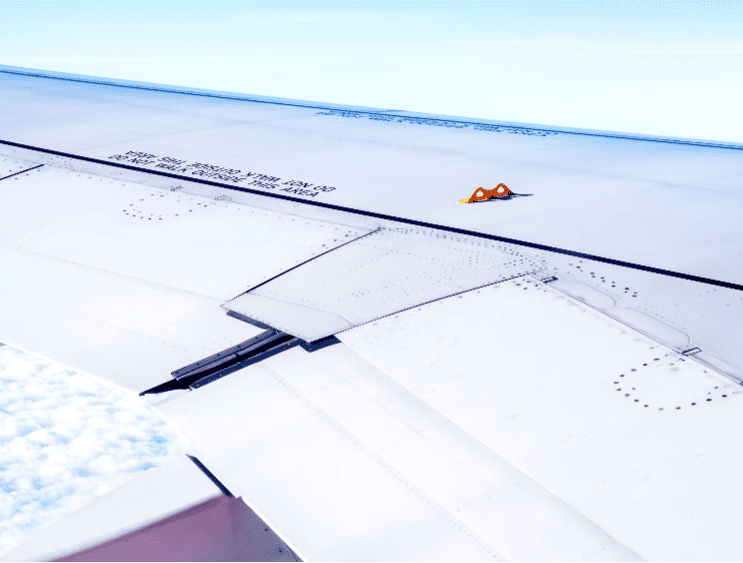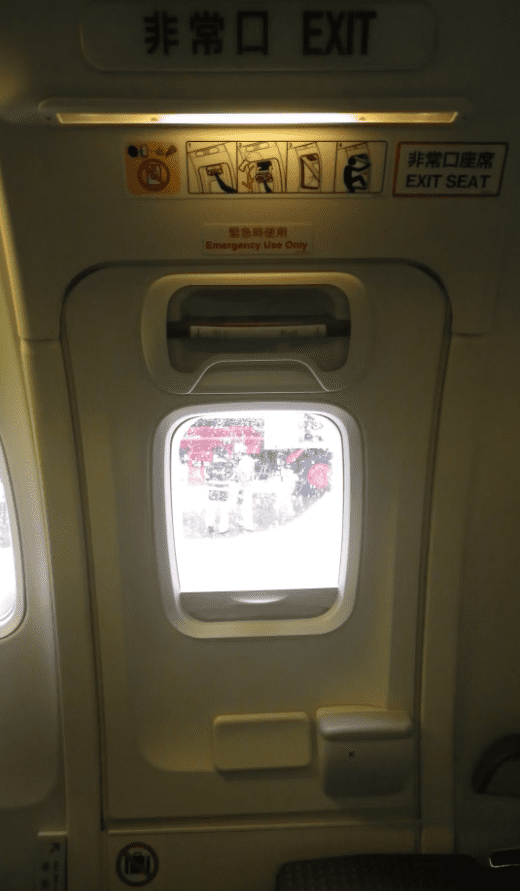A further look at some of the small details most passengers never see.

Photo: tete_escape | Shutterstock
If there is a loss of cabin pressure (decompression), two oxygen masks will fall. Another feature of the lavatory is that the door certainly can be opened by cabin crew from the outside. This is useful in case a passenger collapses while using the lavatory, and we need to gain entry.

Photo: E217 | Wikimedia Commons
Another feature of the PSU on Airbus aircraft is a pull-down system that allows the cabin crew to check how many oxygen masks are in a row. Some rows have extra oxygen masks to allow infants to be seated on laps. Cabin crew members, upon seeing an infant sitting on a lap, can check they are seated in the correct row with the extra masks.
Exit row seats
Passengers know they have extra legroom around the seats at the overwing exits. However, they often don’t realize that they usually can’t stow anything under the seat in front. Should there be an evacuation, the baggage would fall into the exit area and slow things down.
On many aircraft types, there is a feature on these seat tray tables near the latch. If there were an evacuation, it would stop the tray table from falling and blocking the exit. Of course, anyone seated at the overwings must be willing and prepared to open the overwing exit if needed. If the plane were to land on water, the cushions (of any seat) can be taken off and used as flotation devices.
Source: Simple Flying

Warning: Illegal string offset 'cookies' in /home/u623323914/domains/eng.bayviet.com.vn/public_html/wp-includes/comment-template.php on line 2564